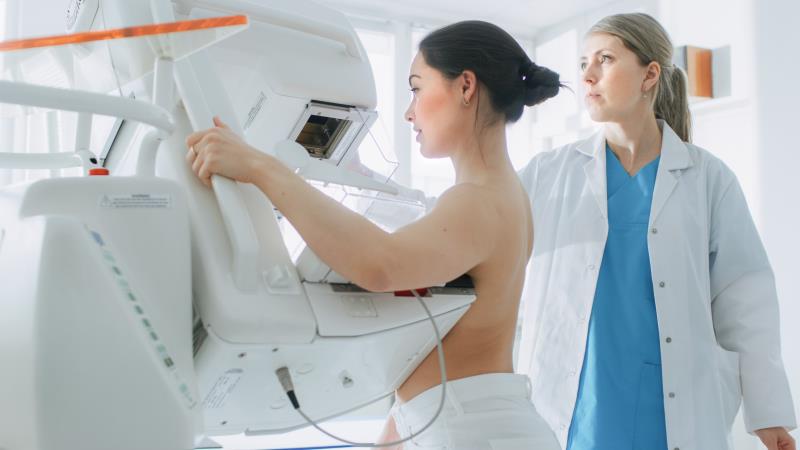Starting mammography at 40 prevents deaths from breast cancer





Yearly mammography starting from the age of 40 rather than the age of 50 significantly reduces the risk of dying from breast cancer, particularly during the first 10 years of follow-up, according to the large randomized UK Age trial.
“[Hence,] reducing the lower age limit for screening from 50 to 40 years could potentially reduce breast cancer mortality,” said the researchers.
Previously, there has been a great deal of debate on the appropriate age range to screen for breast cancer. Recommendations also vary among different international bodies.
“There remains uncertainty as to the appropriate age at which to start screening, specifically about whether to screen women younger than 50 years,” the researchers pointed out. “Mammographic screening in this age group presents a greater challenge than at older ages in both radiological and public health terms.”
In the multicentre national trial, 160,921 women aged 39–41 years were randomized in a 1:2 ratio to undergo yearly mammographic screening up to age 48 years (intervention group), or to receive no screening until approximately age 50 years when they are invited to their first NHSBSP* screen (control group). They were followed up for a median duration of 22.8 years. [Lancet Oncol 2020;doi:10.1016/S1470-2045(20)30398-3]
At 10 years of follow-up, deaths due to breast cancer were significantly lower among women who started mammographic screening early than those who started later (deaths, 83 vs 219; relative rate [RR], 0.75; p=0.029).
The relative benefit was attenuated beyond the first 10 years of follow-up, with no significant reduction in the early vs late screening groups (deaths, 126 vs 255; RR, 0.98; p=0.86). This was despite the absolute benefit remaining rather constant at “approximately one death prevented per 1,000 women screened” up till the end of follow-up.
“The significant early effect on breast cancer mortality, which loses significance with long-term follow-up, reflects the fact that the deaths prevented by the intervention were in the first 10 years after randomization,” the researchers noted.
“Given that the absolute reduction in breast cancer mortality remained approximately constant in the long term, the updated data are consistent with the intervention having a lesser effect on mortality from grade 3 cancers … rather than postponing deaths [from these cancers],” they explained.
Importantly, as the researchers highlighted, these findings suggest that starting mammographic screening early adds little risk of overdiagnosis compared with screening initiated at a later age.
However, this view was opposed by Dr Anthony Miller from University of Toronto, Ontario, Canada, who held the stance that mammographic screening can lead to a harmful effect, in particular from overdiagnosis.
“One surprising aspect of the report ... is the conclusion that no overdiagnosis of breast cancer occurred in either group,” he wrote in an accompanying editorial. [Lancet Oncol 2020;doi:10.1016/S1470-2045(20)30428-9]
“As overdiagnosis appears to increase with age, it is possible that overdiagnosis occurred in both groups after the age of 50 years, but could not be detected because of the design of the trial.”
As significant advances have taken place in terms of diagnosis, screening, and therapy for breast cancer since the screening was initiated in the study, this might have limited the scope for screening to prevent deaths.
“[On the other hand,] recent results suggest that even with effective adjuvant systemic therapies, there is still a substantial survival advantage from diagnosis and treatment at an early stage,” said the researchers.